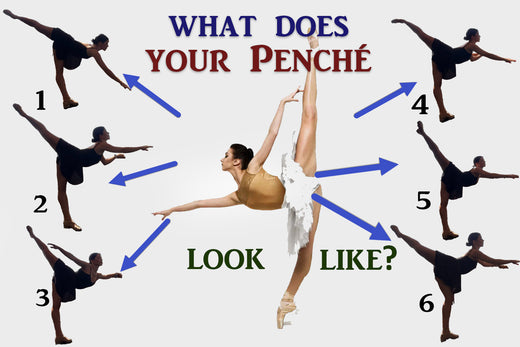“Why do I have the pain behind the knee?” The pain behind the knee when doing the true front split.
Posted by Paul Zaichik on

This is one of the most common questions that comes up about the True Front Split, I usually get questions like that pretty often.
The answer depends on many factors. First of all where is the pain behind the knee located? There are tendons on both sides. On the inside there is medial hamstrings, semi tendinosis and semi membrenosis, as well as gracilis and sartorius tendons. And also there is a tendon from the calf muscle. On the outside there is also a tendon from the calf muscle and the biceps femoris, long and shot head, the lateral hamstring.
If the pain is in these locations, chances are it has something to do with the tendons. Maybe the muscle is too tight maybe the muscle is contracting. Maybe the tendon is injured that is for somebody locally to test. Sometimes people feel the pain in the middle so it's behind the knee but it's right in the middle. There are various possibilities.
True Front Split Strength & Flexibility Training at Home
COMPLETE COMBO - ALL 3 LEVELS - BEGINNER, INTERMEDIATE, ADVANCED
Learn how to do a True Front Split at home with a proven method that is guaranteed to take you from 0 to a 180 degree split and beyond. We can even predict the date that you'll get your split!
- See visible results in 1 to 3 easy follow along workouts.
- Unique muscle by muscle isolation stretching techniques.
- Fast Progress.
- Permanent Results.
- No Pain.
- No Injuries.
- Flexibility & Strength combined.
- For all ages.
- 30 – 40 minute workouts, 2 – 3 times a week.
- All videos contain subtitles.
- Train at home. At your pace. From any device.
- Instant Access.
- No hidden fees. No strings attached. No surprises.
Your leg does not hyperextend because ligaments do not allow that to happen.
Your leg does not hyperextend because ligaments do not allow that to happen. And in some styles of dance, dance instructors forcefully stretch the ligaments of the students to create a line of the hyperextended knee. If a ligament is injured, you will have pain behind the knee.
There's also cartilage inside the knee joint and that cartilage is where your upper leg bone, your femur meets tibia, which is the larger of your two lower leg bones. Meniscus can get injured by forceful kicking, for example, or jumping and landing incorrectly, or forceful twisting movements of the knee, all these can injure the meniscus. And you may feel pain there.
Sometimes if a person is injured it can be a combination of multiple tissues not just one.
So, when there's an injury your body wants to protect you from further injury, thus the muscles that flex the knee will set a specific length where they contract before you feel the pain before there is potential for further injury. What that simply means is that you will not be able to extend your knee straight and if you do there's going to be discomfort.
Often when people contact me about this, I would say please go to your local health care practitioner and ask to do the imaging in most cases your health care provider will order the imaging if the description of your discomfort matches the need to see what is going on inside.
“I got an MRI done and there was an injury”
I do have people who write back to me and say “I got an MRI done and there was an injury” and then my advice would be the same as their health care practitioner “Do not touch that injury in terms of exercising it until it heals”.
This is difficult for people to do because, they have gotten some results, they got some improvement, and they are afraid to lose it. But if they don’t stop exercising, they may end up with a more significant injury which will set them back for months. Instead it is always best to stop and take a break, losing just a little bit of the flexibility gained, rather than suffering a long term ongoing injury.
On a few occasions, providing that there is doctor’s approval, and the injury is not to the muscle or the tendon, it is still possible to practice ZST’s. However, the person will need to be supervised by a Certified EasyFlexibility Instructor who understands exactly how to stretch with the ZST’s as not to touch the injured tissue. Nevertheless it is still best to avoid exercising all together as not to worsen the injury. Of course depending on the injuries there are various modalities that can speed up the healing. But this is a topic for a next blog post.
True Front Split Strength & Flexibility Training at Home
COMPLETE COMBO - ALL 3 LEVELS - BEGINNER, INTERMEDIATE, ADVANCED
Learn how to do a True Front Split at home with a proven method that is guaranteed to take you from 0 to a 180 degree split and beyond. We can even predict the date that you'll get your split!
- It's easy to get started!
If you are ready to do effortless Splits ANYTIME that you wish with a training method that is Easy, Pain Free and Fast, that is designed to work naturally with your body and keep your flexibility for years to come, then join thousands of satisfied EasyFlexibility practitioners and START YOUR TRAINING TODAY!
This Combo includes the following step by step instructions for:- Beginner True Front Split
- Intermediate True Front Split
- Advanced True front Split (Beyond 180 degrees)
© ElasticSteel Corp., EasyFlexibility, Paul Zaichik, et. El., 2022. No part of the materials available through ElasticSteel.com, EasyFlexiiblity.com, site may be copied, photocopied, reproduced, translated or reduced to any electronic medium or machine-readable form, in whole or in part, without prior written consent of Paul Zaichik EasyFlexibility.com, Elasticsteel.com.. Any other reproduction in any form without the permission of Paul Zaichik EasyFlexibility.com, Elasticsteel.com is prohibited. All materials contained on this site are protected by United States copyright law and may not be reproduced, distributed, transmitted, displayed, published or broadcast without the prior written permission of Paul Zaichik, EasyFlexibility.com, Elasticsteel.com.
Share this post
0 comment








